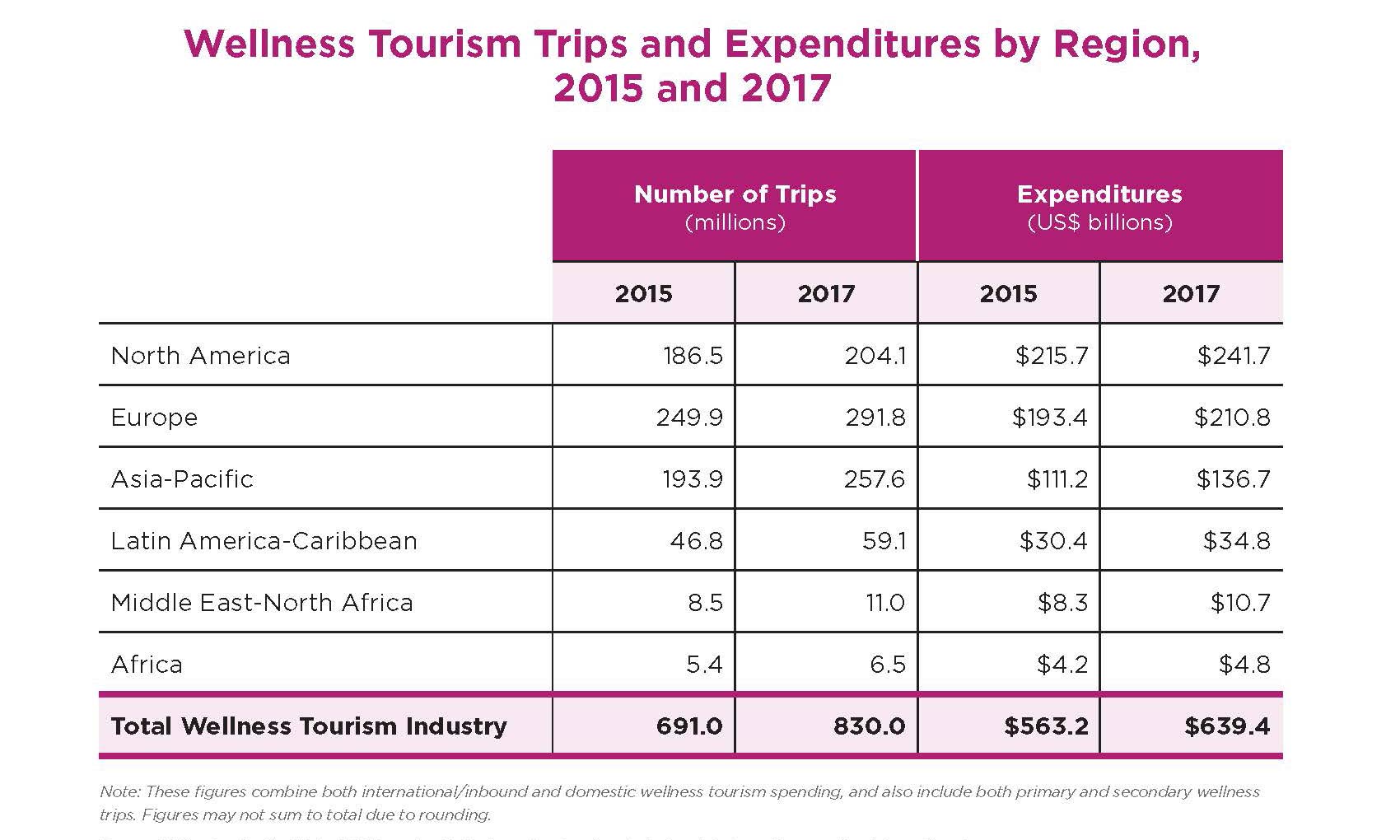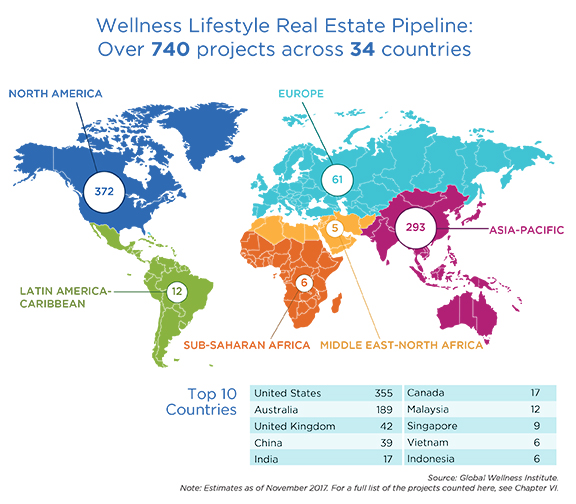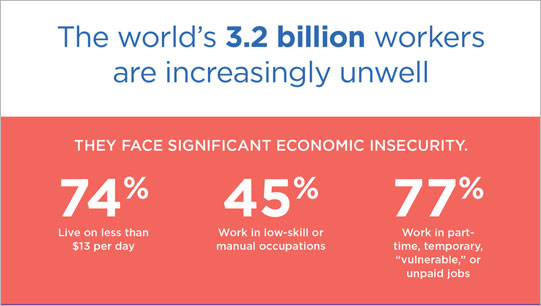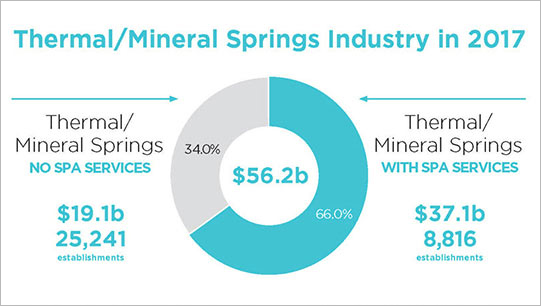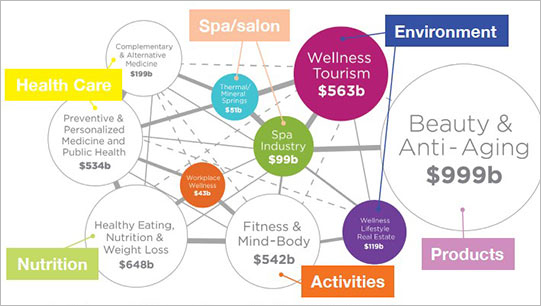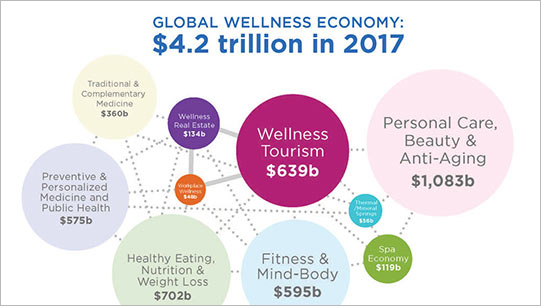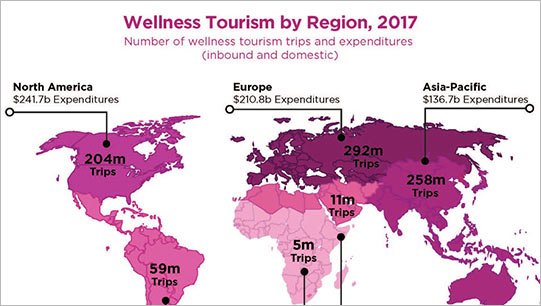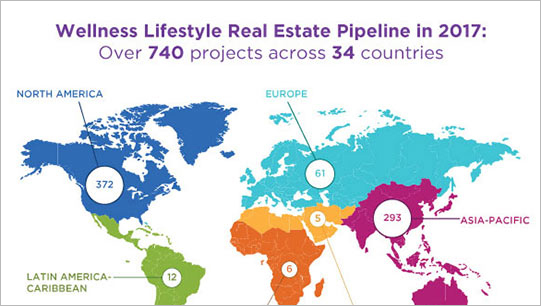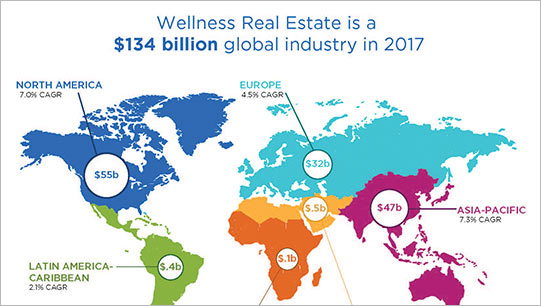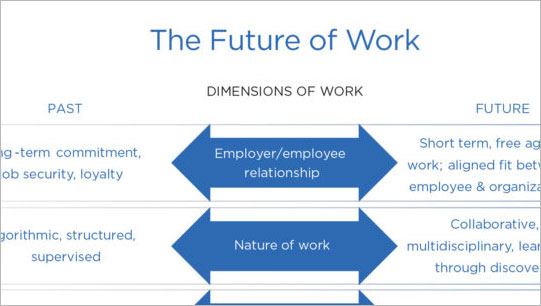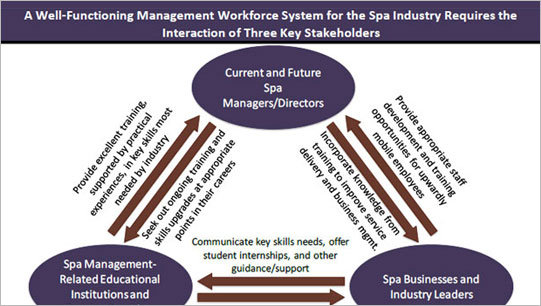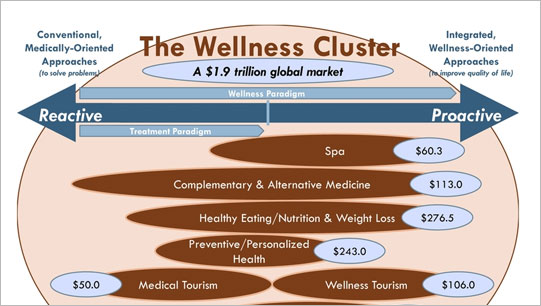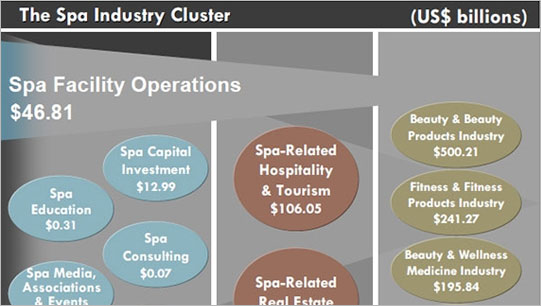For questions about research, please contact:
Beth McGroarty; beth.mcgroarty@globalwellnessinstitute.org +1.213.300.0107
Beth McGroarty; beth.mcgroarty@globalwellnessinstitute.org +1.213.300.0107
WELLNESS INDUSTRY STATISTICS & FACTS
The Global Wellness Institute (GWI) is recognized as the leading source for authoritative wellness industry research. Since 2007, the GWI has commissioned and published numerous research reports on the $4.5 trillion global wellness economy, including its flagship publication, the Global Wellness Economy Monitor. All reports are available free to the public. Data and highlights from recent studies are below. To download all GWI research, including special reports for certain geographic areas, visit Wellness Industry Research.
Global Wellness Economy
Updated data and trends are provided in the most recent GWI Global Wellness Economy Monitor (released in October 2018, with data for 2017).
Download Full Report | Download Report Graphs| Download 2019 Economy Bubble Chart

Download Full Report | Download Report Graphs| Download 2019 Economy Bubble Chart

- The global wellness economy was a $4.5 trillion market in 2018.
- The industry grew by 6.4 percent annually from 2015–2017, from a $3.7 trillion to a $4.2 trillion market, nearly twice as fast as global economic growth (3.6 percent annually, based on IMF data).
- Wellness expenditures ($4.2 trillion) are more than half as large as total global health expenditures ($7.3 trillion, based on WHO data).
- The wellness industry represents 5.3 percent of global economic output.
- Among the 10 wellness markets analyzed, revenue growth leaders from 2015–2017 (per annum) were the spa industry (9.8 percent), wellness tourism (6.5 percent) and wellness real estate (6.4 percent).
Key sectors include:
- Personal Care, Beauty and Anti-Aging ($1,083 billion)
- Healthy Eating, Nutrition and Weight Loss ($702 billion)
- Wellness Tourism ($639 billion)
- Fitness and Mind-Body ($595 billion)
- Preventative and Personalized Medicine and Public Health ($575 billion)
- Traditional and Complementary Medicine ($360 billion)
- Wellness Lifestyle Real Estate ($134 billion)
- Spa Economy ($119 billion)
- Thermal/Mineral Springs ($56 billion)
- Workplace Wellness ($48 billion)
Global Physical Activity Economy
First-ever research report on the six-sector global physical activity economy, including the fitness, sports & active recreation, mindful movement, equipment, apparel/footwear and technology markets.
Download Full Report | Download Report Graphs

Download Full Report | Download Report Graphs

- The physical activity economy will surpass $1.1 trillion by 2023.
- Asia-Pacific will overtake North America as the largest market accounting for an eye-opening 40 percent of all global growth through 2023.
- China and India together will drive nearly one-third of all growth.
- Mindful movement will be the #1 growth sector (12 percent annually from 2018–2023).
- Technology will be the second-fastest-growing market (8.6 percent annually).
Wellness Tourism
Access the latest wellness tourism data and trends in the most recent GWI Global Wellness Tourism Economyreport (released in November 2018, with data for 2017).
Download Full Report | Download Report Graphs
Download Full Report | Download Report Graphs
Wellness Communities
In-depth global data and key measurements are provided in GWI’s 2018 Build Well to Live Well report.
Download Full Report
Download Full Report
Workplace Wellness
In-depth data and analysis are provided in GWI’s 2016 The Future of Wellness at Work report.
Download Full Report
Download Full Report
Spa Industry
Updated data and trends are provided in the most recent GWI Global Wellness Economy Monitor (released in October 2018, with data for 2017).
Download Full Report
Download Full Report
Thermal/Mineral Springs
Updated data and trends are provided in the most recent GWI Global Wellness Economy Monitor (released in October 2018, with data for 2017).
Download Full Report
Download Full Report
Beauty & Anti-Aging
The GWI partnered with Anjan Chatterjee, MD, FAAN, University of Pennsylvania to produce the Beauty2Wellness: Mitigating Barriers and Building Bridges report. Download the full Beauty2Wellness report here.
Key Charts from GWI Research Reports
Global Wellness Institute research reports are made available to the public at no cost; download your complimentary copies here.
Please note that all reports are the property of the Global Wellness Institute. Quotation of; citation from; and reference to any of the data, findings and research methodology from the report must be credited to the Global Wellness Institute. To obtain permission for copying and reproduction, please contact the Global Wellness Institute by email at info@globalwellnessinstitute.org.
Click charts to enlarge.

